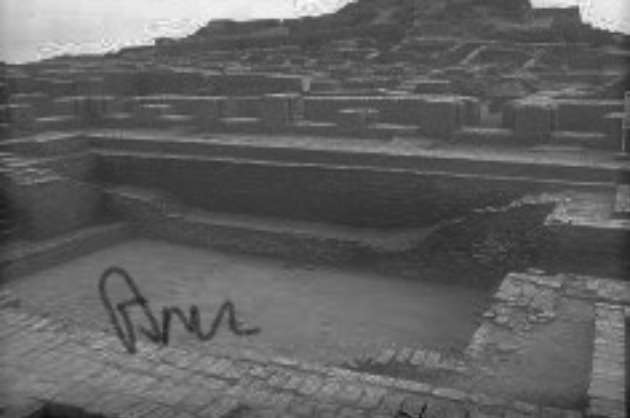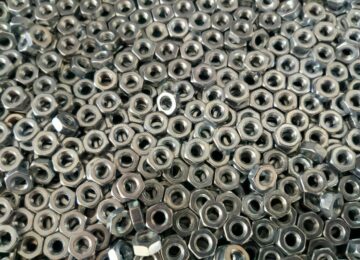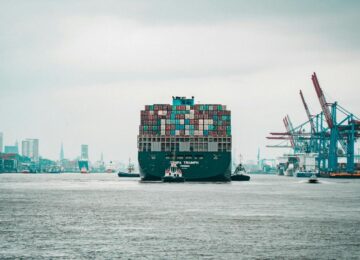Anupama Nair
I am sure after reading about the great civilization you might want to read about the main sites of the world's first Urban Civilization. There was seven known biggest townships — Harappa, Mohenjo-Daro and Ganeriwala in Pakistan and Dholavira, Rakhigarh, Lothal and Kalibangan in India. Let me now, take you on a journey to these seven sites.
Mohenjo-Daro is the most famous sites of the great civilization and is located in Larkana District west of the Sindhu (Indus) river in Sindh. It became not only the largest city of the Indus Valley Civilization but also one of the world’s earliest major urban centers. Mohenjo-Daro was one of the most sophisticated cities of the period, with advanced engineering and urban planning. The city of Mohenjo-Daro contains the Great Bath, which was a large, public bathing and social area. One seal found from Mohenjo-Daro showed a half-human, half-buffalo monster attacking a tiger (the Sumerian myth of a monster created by Arura—the Sumerian earth and fertility goddess to fight Gilgamesh, the hero of an ancient Mesopotamian epic poem), shows the trade between two civilizations. Seals have been found at Mohenjo-Daro depicting a figure standing on its head, and another, the Pasupathi (resembling Bhagwan Shiva) seal, sitting cross-legged in yoga-like pose and a harp-like instrument depicted on an Indus seal and two shell objects found at Lothal indicate the use of stringed musical instruments.
Harappa was a fortified city in Punjab (Pakistan) that is believed to have been home to as many as 23,500 residents living in sculpted houses with flat roofs made of red sand and clay. The city was spread over 370 acres and had a fortified administrative and religious centers of the same type found in Mohenjo-Daro. Harappans demonstrated advanced architecture with dockyards, granaries, warehouses, brick platforms, and protective walls. These massive walls likely protected the Harappans from floods and may have deterred military conflicts.
Harappans were known for seal carving or the cutting of patterns into the bottom face of a seal, a small, carved object used for stamping. They used these distinctive seals for the identification of property and to stamp clay on trade goods. Seals decorated with animal figures, such as elephants, tigers, and water buffalos have been one of the most commonly discovered artifacts found here. Harappans was also engaged in shell working, and shells used in their crafts have origins from as far away as the coast of modern-day Oman.
Both Harappa and Mohenjo-Daro had rulers (scales) of ivory uncovered from the ruins. One such specimen was even calibrated to 1/16 of an inch—less than 2 millimeters. These kinds of rulers were clearly very prominent, as even bricks of the valley’s buildings were found to follow the same measurements. The earliest existence of weighing scales also dates back to these cities, where balances were used to compare measure and compare goods in trade. The excavations in both Harappa and Mohenjo-Daro, showed a number of distinct examples of the culture’s art, including sculptures, seals, pottery, gold jewelry, and anatomically detailed figurines in terracotta, bronze, and steatite.
“Among the various gold, terracotta, and stone figurines found was a figure of a priest-king displaying a beard and patterned robe. Another figurine in bronze, known as the ‘Dancing Girl’, shows a female figure in a pose that suggests the presence of some choreographed dance form enjoyed by members of the civilization. Terracotta works also included cows, bears, monkeys, and dogs. In addition to figurines, the people of Harappa and Mohenjo-Daro are believed to have created necklaces, bangles, and other ornaments”.
Ganeriwala is situated near the Indian border on the dry river bed of the Ghaggar-Hakra, now part of a vast Thar desert. It is spread over 80 hectares and comparable in size with the largest sites of the Indus Valley Civilization, such as Mohenjo-Daro. But it has not been excavated, only identified. It may turn out to be among the top five largest towns of the Indus Valley Civilization. Although excavation has yet to begin at this site, a terracotta tablet was found, which bear similarity to the ones found in Harappa, Mohenjo-Daro and Kalibangan. In this seal, we can find a cross legged person (suggesting a yogic posture) and a kneeling person below a tree. The importance of Ganeriwala is, it is equidistant from both Harappa and Mohenjo-Daro, so the excavation may provide more information about this ancient civilization.
Kalibangan is an ancient site of the Indus Valley Civilization is located in Rajasthan. The site contains both pre-Harappan and Harappan remains, and shows the transition between the two cultures. Although the culture before Harappa had copper and produced pottery, it had no writing system, and it’s ruins show the absence of an orderly layout we find in Indus Valley and also the use of baked brick. The Harappan remains found include a cemetery and a fortified citadel. Historians state “excavation here has revealed as many as nine building phases and the citadel mound is a parallelogram on a plan of about 430 feet on the east-west axis and 850 feet on the north-south”.
“Traces of a brick wall around the lower town were also encountered. The central sector of the citadel contained a series of high brick platforms divided by narrow passages. The upper parts of these platforms had been seriously damaged, and their function is mysterious, but they do not appear to have been the foundation for a granary. The northern sector contained normal domestic housing. A cemetery was discovered a short distance to the west of the town”.
Rakhigarh in Haryana was excavated by Shri Amarendra Nath of the Archeological Survey of India. Five interconnected mounds spread in a huge area form Rakhigarhi's unique site. Two mounds, out of five, were believed to be thickly populated. It was found that mature Harappan phase represented by a planned township having mud-brick as well as burnt-brick houses with proper drainage system existed here. Animal sacrificial pit lined with mud brick and triangular and circular fire alters on the mud floor have also been excavated that signified the ritual system of Harappans. “A cylindrical seal with five Harappan characters on one side and a symbol of an alligator on the other is an important find from this site”.
Other finds included “blades (terracotta and shell bangles), beads of semiprecious stones, terracotta, shell and copper objects, animal figurines, toy cart frame and wheel of terracotta, bone points. The excavations also discovered a few burial sites”.
Lothal, in Saragwala village on the bank of Sabarmati in Dholka taluka of Ahmedabad district, was the one of the most prominent site of Indus Valley Civilization in Gujarat. Lothal is a combination of two words Loth and thal, which meant ‘the mound of the dead.’ The city was inhabited during 3700 BC and was a flourishing port. The excavation was started from 1955–1960 by the Archaeological Survey of India to excavate the ancient city. Archaeologists believe that “the city was a part of a major river system on the ancient trade route from Sindh to Saurashtra in Gujarat. Excavations here have offered the greatest number of antiquities in the archaeology of modern India. From a graveyard in Lothal, 21 human skeletons were found and foundries for making copperware were also discovered. Ornaments made of semi-precious stones, gold etc. were also found from the site”.
Dholavira is in one of the five largest cities of the Indus Valley Civilization, and is located about 250 km from Bhuj. It has two seasonal brooks, Mansar and Manhar. “The property comprises two parts, a walled city and a cemetery to its west”, stated a government release, adding that Dholavira flourished for nearly 1,500 years.
According to an Archaeological Survey of India (ASI) “excavations at the site revealed seven cultural stages documenting the rise and fall of the Indus Valley Civilization. The city, is also outstanding for its planning and architecture. The salient components of the full-grown cityscape consisted of a bipartite 'citadel', a 'middle town' and a 'lower town', two 'stadia', an 'annex', a series of reservoirs all set within an enormous fortification running on all four sides”.
“While unlike graves at the other Harappan sites, no mortal remains of humans have been discovered at Dholavira. “Memorials that contain no bones or ashes but offerings of precious stones, etc. add a new dimension to the personality of the Harappans” said Mr. Bisht an archaeologist. He further stated “remains of a copper smelter indicate of Harappans, who lived in Dholavira, knew metallurgy. It is believed that traders of Dholavira used to source copper ore from present-day Rajasthan and Oman and UAE and export finished products. It was also a hub of manufacturing jewelry made of shells and semi-precious stones, like agate and used to export timber”.
“Beads peculiar to the Harappan workmanship have been found in the royal graves of Mesopotamia, indicating people of Dholavira used to trade with the Mesopotamians. Its decline also coincided with the collapse of Mesopotamia, indicating the integration of economies. Harappans, who were maritime people, lost a huge market, affecting the local mining, manufacturing, marketing and export businesses once Mesopotamia fell”.
Bisht said “that from 2000 BC, Dholavira entered a phase of severe aridity due to climate change and rivers like Saraswati drying up. Because of a drought-like situation, people started migrating toward the Ganges valley or towards south Gujarat and further beyond in Maharashtra. In those times, the Great Rann of Kutch, which surrounds the Khadir island on which Dholavira is located, used to be navigable, but the sea receded gradually and the Rann became a mudflat”.
The Prime Minister on hearing the news tweeted “absolutely delighted by this news. Dholavira was an important urban center and is one of our most important linkages with our past. It is a must visit, especially for those interested in history, culture and archaeology,” he wrote. In the same thread, Modi also added, “I first visited Dholavira during my student days and was mesmerized by the place. As CM of Gujarat, I had the opportunity to work on aspects relating to heritage conservation and restoration in Dholavira. Our team also worked to create tourism-friendly infrastructure there.”
The most positive news I heard was the Government of the two countries are granting visas to visit the sites of the great Indus Valley Civilization. I for one would love to pack my bags and go on a journey and travel in a time machine and see how people lived in those days.




























